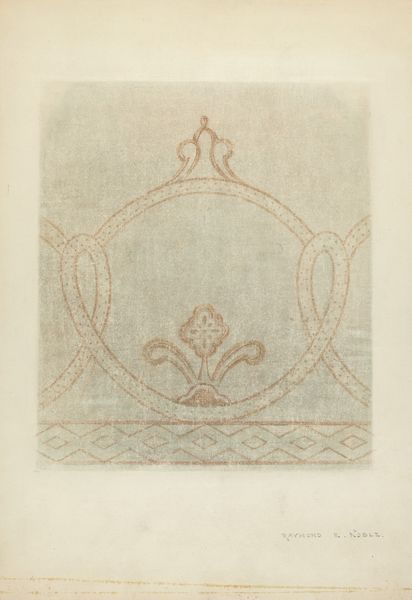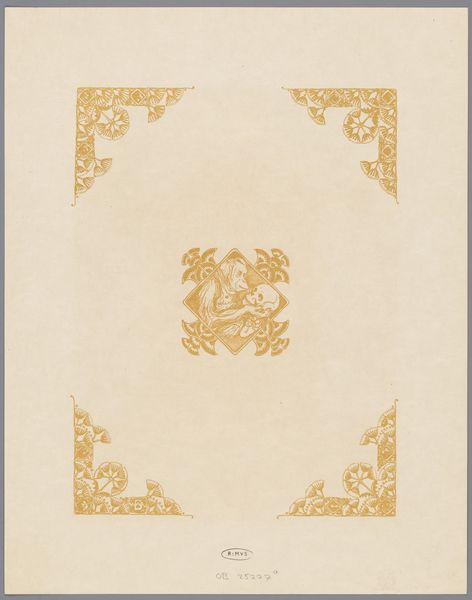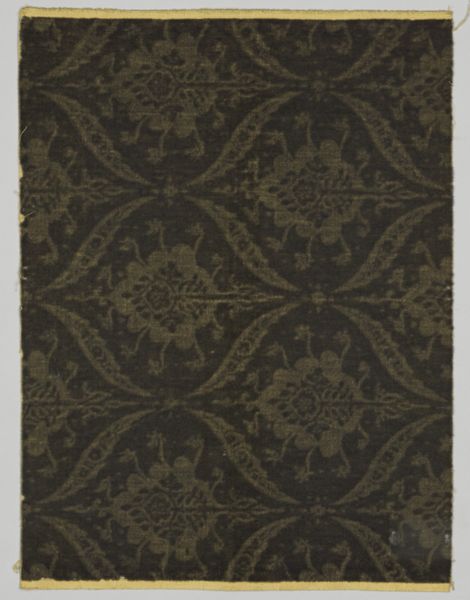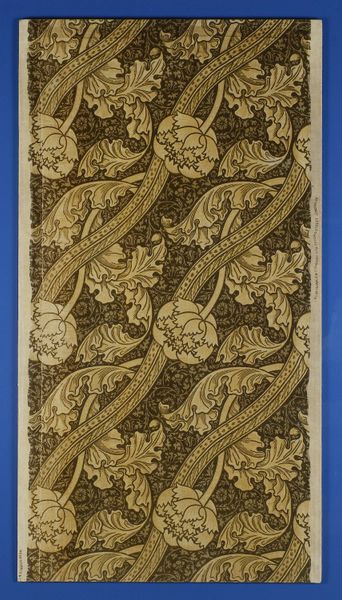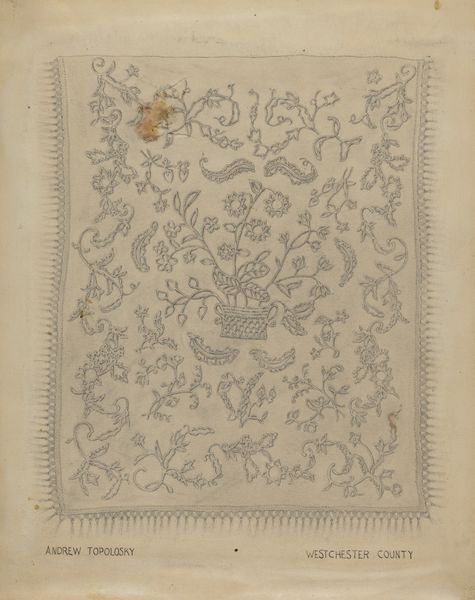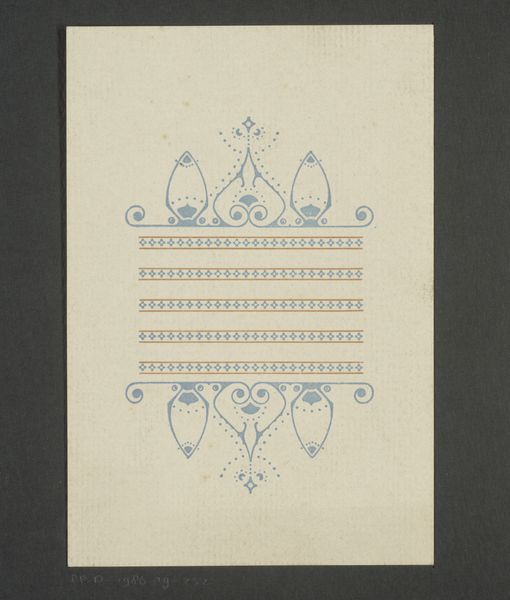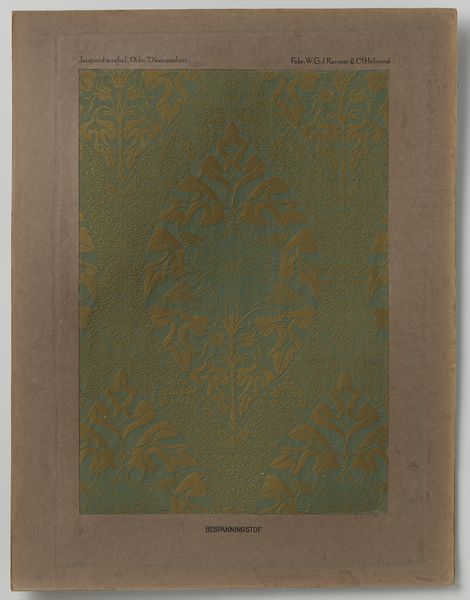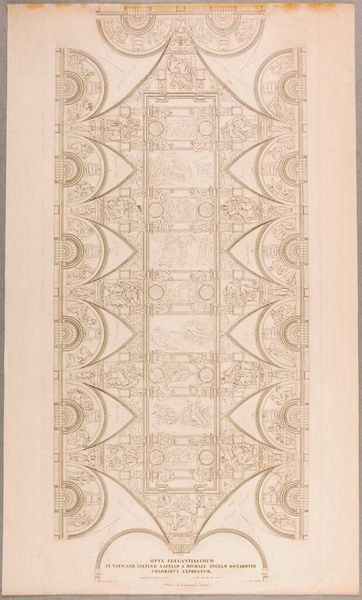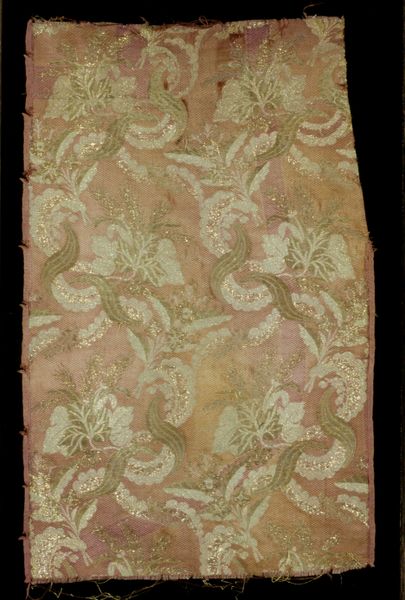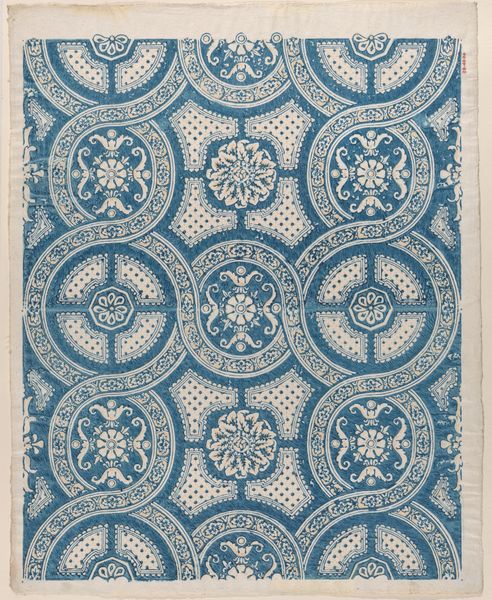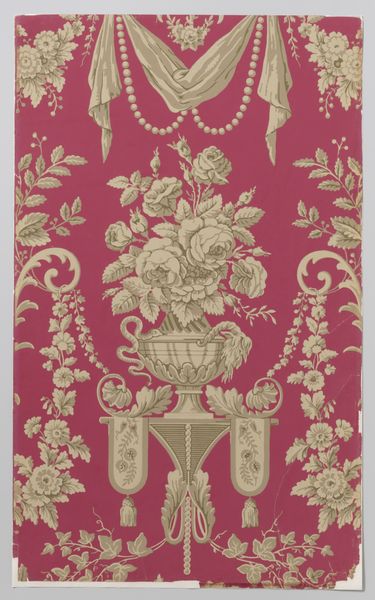
Helft van omslag en schutblad voor: Stijn Streuvels, Reinaert de Vos, 1910 1910
0:00
0:00
bernardwillemwierink
Rijksmuseum
graphic-art, ornament, print, paper, typography
#
graphic-art
#
ornament
#
art-nouveau
# print
#
paper
#
typography
#
decorative-art
Dimensions: height 342 mm, width 260 mm
Copyright: Rijks Museum: Open Domain
Editor: This is the cover and endpaper for "Reinaert de Vos" by Stijn Streuvels, created in 1910 by Bernard Willem Wierink. It’s a printed paper piece, quite decorative. The overall color gives it a warm feeling, but the pattern seems rigid and a little… much? How would you describe what stands out in this cover? Curator: The systematic deployment of ornamental motifs is immediately striking. Note the geometric repetition, anchored by the crowned lion at its visual center, echoed less prominently above with what appears to be the artist's monogram. Consider how the limited palette of a sienna ground and cream ornamentation contribute to the visual unity and structural cohesion of the composition. Editor: So you see the lion as the central organizing figure for the other shapes. Do the shapes or color signify anything deeper? Curator: That's an astute observation. The semiotic significance of each individual form or color is not overtly asserted within the work itself, it remains ambiguous. The image is not symbolic as much as formally evocative. The interplay between ground and figure invites contemplation on fundamental elements such as symmetry and balance. Is the image successful at using symmetry and balance? Where does it fall short? Editor: Well, now that you point out the monogram at the top, that is visually similar but obviously breaks the pure symmetry. Overall though I think it works within the space, using repeated shapes keeps it ordered, though. Curator: Indeed. Wierink's conscious disruption serves not only to emphasize but also to challenge our presuppositions regarding equilibrium and the distribution of weight across the picture plane. An interesting departure, wouldn't you agree? Editor: It does add a bit of character that was initially hard to recognize, viewing it overall as more of a decorative piece rather than representative. Curator: Precisely! These initial formal encounters ultimately affect and transform our comprehension and aesthetic appreciation of the work. The formal, viewed this way, enables, structures, and guides the interpretive potential of any given image.
Comments
No comments
Be the first to comment and join the conversation on the ultimate creative platform.
